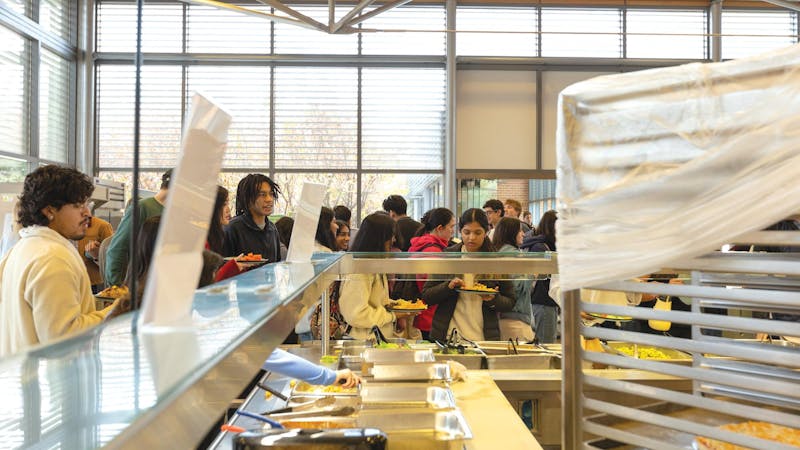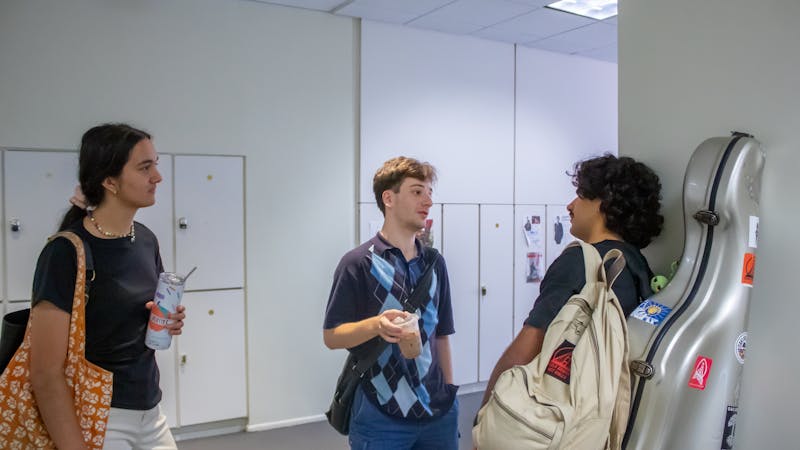Well, well, well: how Rice stays hydrated

Rice’s personal water well has sustained campus through climate crises like the 2021 winter freeze. Rohan Palavali / Thresher
Those who walk near the Ralph S. O’Connor Building for Engineering and Science may hear the faint droning noise of machinery coming from the Central Plant, one of Rice’s two power plants that provide energy and water to the campus. Through the maze of pipes, wires and metal structures stands a fence door guarding one of the Rice’s lifelines — a water well.
“We roughly use about 100 million gallons of water [every year] for domestic water use,” Hugh Ton-That, the director of plant operations, said. Ton-That oversees the operations of both power plants on campus. “Basically the whole core of the campus — all the buildings around the loop and the North Colleges and South Colleges — are tied into this [well] system. Everything else is tied directly to the city.”
Rice’s personal water well has helped the campus through crises, including the 2021 freeze. According to Rice’s Facilities and Capital Planning Department, when the university opened its doors in 1912, this well was its only source of water. Since groundwater levels are generally more stable and reliable than those of surface water, architectural firm Cram, Goodhue and Ferguson decided to take advantage of an aquifer deep in the ground of the university. The well was placed next to the Power House, now called the Central Plant, the university’s only power plant at the time.
“[Our well] is unique. Most wells or most water systems just bring the water to a tank and then have another set of pumps to pump it out to the buildings,” Keaton Kinstley, an energy and water analyst under the Office of Sustainability, said. “This pump actually is an all-in-one package, so it can pump all the way to [the] South College[s] in one self-contained cell.”
This means that the well is not connected to external pumps or mechanisms — it powers its own water distribution. “The water comes through, it’s chlorinated, disinfected with just a pure chlorine gas and then sent out to campus,” Kinstley continued.
Today, the university obtains about 80 percent of its water from the City of Houston, according to the Rice Office of Sustainability. At any given moment, both systems are working in tandem to provide Rice with the water it needs to cool its machinery, provide students with drinking water and much more. The university strives to maintain a balance between use of city and well water.
“There’s a check valve [in the well],” Kinstley said. “If the [water] pressure is higher on the city side, it flows through to campus. If it’s higher on the well side, the valve closes and water flows from the well. If anything happens to [either system], we’re not losing water.”
The well requires constant maintenance and examination — technicians work around the clock to ensure that it is working to the best of its ability.
“[Operators] test [the] water every two hours. We [have to] make sure that the valve speed drive maintains the pressure,” Kinstley said. “[We have] operators here 24/7, so they know right away when things trip. [The well] provides all the pressure, everything all in one package. [If] it trips it's really great to have [a backup]. The water distribution system is very resilient.”
This resilience is especially important in situations in which water from the city becomes unavailable. The on-campus well ensures that the university can still keep running and provide its residents with water, even in an emergency.
“If something happens in the city and one of the big mains [fails], we can supply all of the residential colleges with good drinking water and backup power,” Ton-That said. “It's not just for domestic water use. We have to have the water for the boiler for the cooling tower [on the electric plant]. We need the water so that we don’t shut down the university.”
This preparation and resiliency paid off recently. When temperatures dropped below freezing in 2021, pipes and water systems across Texas, including those in Houston, froze over. Over a million people in Houston lost power and water. Due to a lack of heating systems, around 200 people across the state lost their lives, according to the National Centers for Environmental Information. Without the well, Rice’s campus wouldn’t have been able to access water — it kept the campus insulated from the worst effects of the storm.
“[During the freeze], the city of Houston lost water pressure, so we [switched the water supply] over to the well,” Ton-That said. “We did not lose any of the domestic water supply to all the colleges, and we were able to run our equipment throughout the duration of that crisis.”
More from The Rice Thresher

Over 1,000 students petition against new meal plan
When Konstantin Savvon opened the Housing and Dining email announcing the new unlimited meal plan, he was instantly concerned about the impact on off-campus students like himself.

Rice shuttle bus drivers reflect on changes and connections behind the wheel
Martine Stewart has spent the past year behind the wheel of Rice’s greater loop shuttle, circling the inner campus from the early morning to late afternoon. She said she has come to recognize many of her regular riders – not just their faces, but the exact spots where they wait to be picked up.

Music majors at Rice’s Shepherd School tackle busy schedules, future goals
Cirdan Vonnahme began playing the cello at 4 years old. After winning his first competition at 11 and debuting with an orchestra, he realized he wouldn’t mind playing the cello for life.

Please note All comments are eligible for publication by The Rice Thresher.